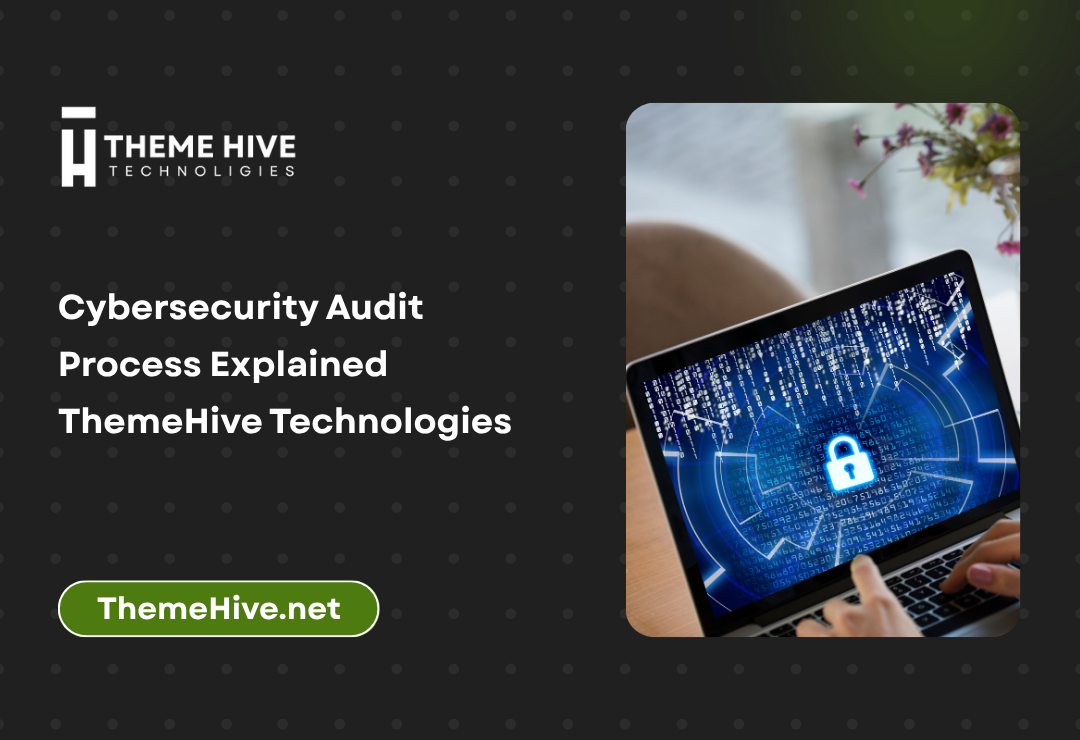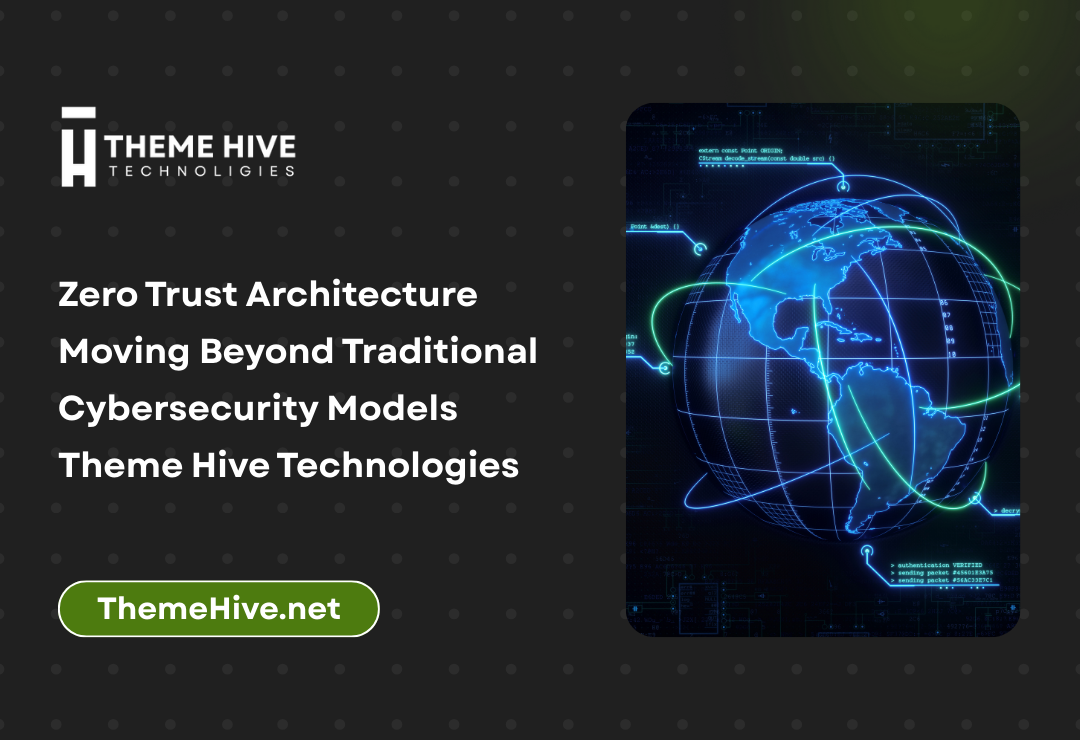In today’s digital landscape, organizations face unprecedented cybersecurity threats that can compromise sensitive data, disrupt operations, and damage reputation. The cybersecurity audit process has become a critical component of modern business strategy, enabling companies to identify vulnerabilities, assess risks, and implement robust security measures. ThemeHive Technologies, a leading provider of comprehensive cybersecurity solutions, presents this detailed guide to help organizations understand and implement effective cybersecurity audit process frameworks.
Understanding the Cybersecurity Audit Process
The cybersecurity audit process is a systematic examination of an organization’s information systems, policies, and procedures to evaluate the effectiveness of cybersecurity controls and identify potential vulnerabilities. This comprehensive assessment helps organizations maintain compliance with industry standards, protect sensitive information, and reduce the risk of cyber attacks.
At ThemeHive Technologies, we understand that a well-executed cybersecurity audit process serves as the foundation for building resilient security architectures. Our comprehensive approach combines industry best practices with cutting-edge methodologies to deliver thorough assessments that drive meaningful security improvements. To learn more about our expertise and company background, visit our About page.
Why Organizations Need a Structured Cybersecurity Audit Process
Risk Identification and Mitigation
The primary objective of any cybersecurity audit process is to identify security risks before they can be exploited by malicious actors. Through systematic evaluation, organizations can discover weaknesses in their security posture and implement appropriate countermeasures.
Regulatory Compliance
Many industries are subject to strict cybersecurity regulations such as GDPR, HIPAA, SOX, and PCI DSS. A comprehensive cybersecurity audit process ensures organizations meet these regulatory requirements and avoid costly penalties.
Business Continuity Protection
By identifying potential threats and vulnerabilities, the cybersecurity audit process helps organizations maintain operational continuity and protect critical business functions from cyber incidents.
Key Components of an Effective Cybersecurity Audit Process
1. Pre-Audit Planning and Preparation
The foundation of a successful cybersecurity audit process begins with thorough planning and preparation. This phase involves:
Scope Definition: Clearly defining what systems, networks, applications, and processes will be included in the audit ensures comprehensive coverage without unnecessary scope creep.
Resource Allocation: Identifying the necessary human resources, tools, and time required for the cybersecurity audit process helps ensure adequate preparation and execution.
Stakeholder Engagement: Involving key stakeholders from IT, security, compliance, and business units ensures the audit addresses all critical aspects of the organization’s security posture.
Documentation Review: Gathering existing security policies, procedures, network diagrams, and previous audit reports provides essential context for the cybersecurity audit process.
2. Risk Assessment and Threat Modeling
A comprehensive risk assessment forms the core of any effective cybersecurity audit process. This involves:
Asset Inventory: Cataloging all digital assets, including hardware, software, data repositories, and network infrastructure components.
Threat Identification: Analyzing potential internal and external threats that could impact the organization’s security posture.
Vulnerability Assessment: Using automated tools and manual techniques to identify security weaknesses in systems and applications.
Risk Prioritization: Evaluating identified risks based on their potential impact and likelihood of exploitation.
Theme Hive Technologies employs advanced risk assessment methodologies that align with frameworks such as NIST and ISO 27001, ensuring comprehensive coverage of all potential security risks.
3. Technical Security Testing
The technical testing phase of the cybersecurity audit process involves hands-on evaluation of security controls and systems:
Network Security Assessment: Testing firewalls, intrusion detection systems, and network segmentation controls to ensure proper configuration and effectiveness.
Application Security Testing: Conducting static and dynamic analysis of applications to identify code vulnerabilities, authentication weaknesses, and data handling issues.
Penetration Testing: Simulating real-world attacks to test the effectiveness of security controls and incident response procedures.
Configuration Review: Examining system configurations against security baselines and industry best practices.
4. Policy and Procedure Evaluation
An effective cybersecurity audit process must evaluate not just technical controls but also organizational policies and procedures:
Security Policy Assessment: Reviewing existing security policies for completeness, accuracy, and alignment with business objectives.
Procedure Validation: Testing whether documented procedures are actually followed and effective in practice.
Training and Awareness Programs: Evaluating the effectiveness of security awareness training and employee education initiatives.
Incident Response Capabilities: Assessing the organization’s ability to detect, respond to, and recover from security incidents.
The Six-Phase Cybersecurity Audit Process Framework
Phase 1: Audit Initiation and Scoping
The cybersecurity audit process begins with formal initiation and clear scope definition. During this phase, auditors work closely with organizational leadership to:
- Define audit objectives and success criteria
- Establish timeline and resource requirements
- Identify critical systems and data repositories
- Determine compliance requirements and standards
- Establish communication protocols and reporting structures
ThemeHive Technologies’ services include comprehensive audit planning that ensures all critical aspects of your organization’s security posture are properly addressed.
Phase 2: Information Gathering and Documentation Review
This phase involves collecting and analyzing existing documentation and information about the organization’s security posture:
- Review security policies and procedures
- Analyze network architecture diagrams
- Examine previous audit reports and findings
- Interview key personnel and stakeholders
- Collect system and application inventories
Phase 3: Technical Assessment and Testing
The technical assessment phase represents the hands-on evaluation component of the cybersecurity audit process:
Vulnerability Scanning: Automated tools scan networks and systems for known vulnerabilities and misconfigurations.
Penetration Testing: Ethical hackers attempt to exploit identified vulnerabilities to assess their real-world impact.
Security Control Testing: Manual and automated testing of security controls to verify their effectiveness.
Data Flow Analysis: Tracking how sensitive data moves through systems to identify potential exposure points.
Phase 4: Risk Analysis and Impact Assessment
During this phase, auditors analyze findings from the technical assessment and documentation review:
- Categorize identified vulnerabilities by severity and impact
- Assess the likelihood of successful exploitation
- Evaluate potential business impact of security incidents
- Identify interdependencies between systems and risks
- Prioritize remediation efforts based on risk levels
Phase 5: Reporting and Recommendations
The reporting phase transforms audit findings into actionable insights:
Executive Summary: High-level overview of security posture and key findings for leadership.
Detailed Technical Findings: Comprehensive documentation of identified vulnerabilities and security gaps.
Risk Assessment Results: Detailed analysis of risks and their potential business impact.
Remediation Recommendations: Specific, actionable recommendations for addressing identified issues.
Implementation Roadmap: Prioritized timeline for implementing security improvements.
Phase 6: Follow-up and Continuous Monitoring
The final phase ensures that identified issues are properly addressed:
- Track remediation progress against established timelines
- Validate that implemented controls effectively address identified risks
- Establish ongoing monitoring procedures
- Schedule follow-up assessments as needed
- Update security policies and procedures based on lessons learned
Industry Standards and Frameworks for Cybersecurity Audit Process
NIST Cybersecurity Framework
The National Institute of Standards and Technology provides comprehensive guidance for implementing effective cybersecurity programs. The NIST framework’s five core functions—Identify, Protect, Detect, Respond, and Recover—serve as an excellent foundation for structuring the cybersecurity audit process.
ISO 27001 Information Security Management
ISO 27001 provides a systematic approach to managing sensitive information and is widely recognized as the international standard for information security management systems. Organizations following ISO 27001 must conduct regular internal audits as part of their compliance requirements.
COBIT Framework
The Control Objectives for Information and Related Technologies framework provides governance and management guidance for enterprise IT, including cybersecurity controls that should be evaluated during the cybersecurity audit process.
Common Challenges in Cybersecurity Audit Process Implementation
Resource Constraints
Many organizations struggle with limited budgets and personnel for conducting comprehensive cybersecurity audits. Theme Hive Technologies addresses this challenge by offering scalable audit services that can be tailored to organizational needs and budget constraints.
Technical Complexity
Modern IT environments are increasingly complex, making comprehensive audits challenging. Our team at ThemeHive Technologies possesses deep expertise across multiple technologies and platforms, ensuring thorough coverage regardless of environmental complexity.
Organizational Resistance
Employees may view audits as disruptive or threatening to their daily operations. Effective communication and stakeholder engagement are essential for overcoming this resistance and ensuring audit success.
Rapidly Evolving Threat Landscape
Cyber threats evolve constantly, requiring audit processes to adapt and stay current with emerging risks and attack vectors.
Best Practices for Cybersecurity Audit Process Success
Establish Clear Objectives
Every cybersecurity audit process should begin with clearly defined objectives that align with business goals and risk tolerance. These objectives should be communicated to all stakeholders and used to guide audit activities.
Engage Qualified Professionals
The complexity of modern cybersecurity requires specialized expertise. Organizations should work with qualified cybersecurity professionals who possess relevant certifications and experience.
At ThemeHive Technologies, our team includes certified cybersecurity professionals with extensive experience across multiple industries and technologies.
Implement Risk-Based Approaches
Focus audit efforts on areas of highest risk to maximize the impact of limited resources. This approach ensures that the most critical vulnerabilities are identified and addressed first.
Maintain Independence and Objectivity
Audit effectiveness depends on maintaining independence from the systems and processes being evaluated. This may require engaging external auditors or establishing clear organizational separation between audit and operational responsibilities.
Document Everything
Comprehensive documentation is essential for audit effectiveness and regulatory compliance. All findings, recommendations, and remediation activities should be thoroughly documented and tracked.
Tools and Technologies for Cybersecurity Audit Process
Vulnerability Assessment Tools
Modern vulnerability scanners such as Nessus, Qualys, and OpenVAS automate the identification of known security vulnerabilities across networks and systems.
Penetration Testing Frameworks
Frameworks like OWASP Testing Guide and NIST SP 800-115 provide structured approaches for conducting security testing as part of the cybersecurity audit process.
Compliance Management Platforms
Governance, Risk, and Compliance (GRC) platforms like ServiceNow GRC and RSA Archer help organizations manage audit processes, track findings, and monitor remediation progress.
Security Information and Event Management (SIEM)
SIEM solutions such as Splunk and IBM QRadar provide valuable data for audit activities by aggregating and analyzing security logs from across the organization.
Measuring Cybersecurity Audit Process Effectiveness
Key Performance Indicators
Organizations should establish KPIs to measure the effectiveness of their cybersecurity audit process:
- Number of critical vulnerabilities identified and remediated
- Time to remediation for different risk categories
- Compliance score improvements over time
- Reduction in security incidents following audit recommendations
- Cost savings from prevented security breaches
Continuous Improvement
The cybersecurity audit process should be continuously refined based on lessons learned, changing threat landscapes, and evolving business requirements.
The Role of ThemeHive Technologies in Cybersecurity Audit Process
ThemeHive Technologies has established itself as a trusted partner for organizations seeking comprehensive cybersecurity audit services. Our approach combines technical expertise with business acumen to deliver audits that not only identify security gaps but also provide practical, cost-effective solutions.
Our cybersecurity professionals work closely with clients to understand their unique business requirements, risk tolerance, and compliance obligations. This collaborative approach ensures that our cybersecurity audit process delivers maximum value while minimizing disruption to business operations.
For organizations interested in learning more about our cybersecurity audit services, we encourage you to explore our latest news and insights or contact our team directly.
Conclusion
The cybersecurity audit process represents a critical investment in organizational security and resilience. As cyber threats continue to evolve and regulations become more stringent, organizations must implement comprehensive audit programs that provide visibility into their security posture and drive continuous improvement.
Theme Hive Technologies remains committed to helping organizations navigate the complexities of cybersecurity auditing through expert guidance, proven methodologies, and innovative solutions. By partnering with experienced professionals and following established frameworks, organizations can build robust cybersecurity programs that protect their most valuable assets and enable sustainable business growth.
The effectiveness of any cybersecurity audit process ultimately depends on organizational commitment, proper resource allocation, and continuous improvement. Organizations that view auditing as an ongoing strategic initiative rather than a one-time compliance requirement will be best positioned to defend against evolving cyber threats and maintain competitive advantage in an increasingly digital world.







